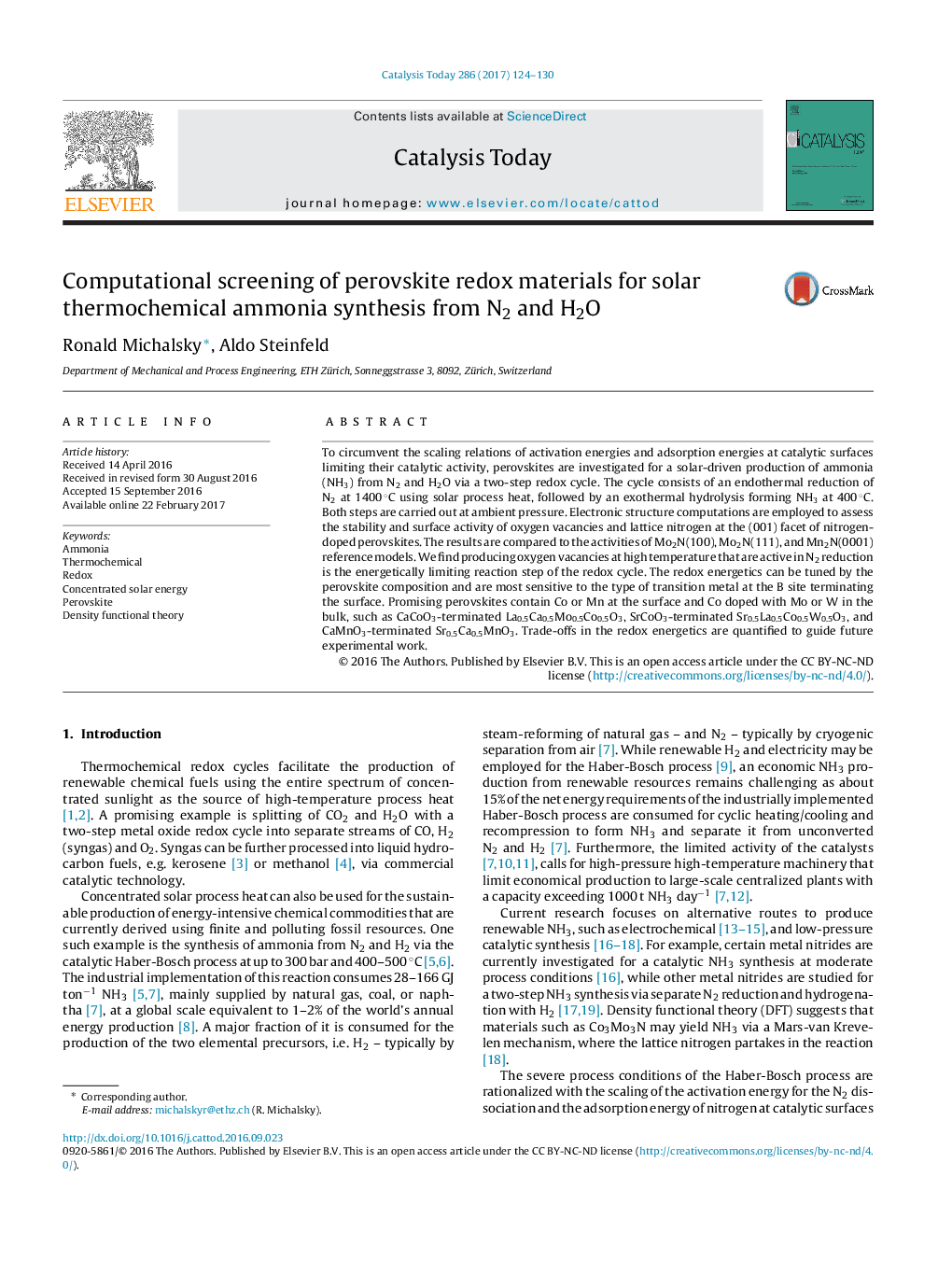| Article ID | Journal | Published Year | Pages | File Type |
|---|---|---|---|---|
| 6455304 | Catalysis Today | 2017 | 7 Pages |
â¢A solar-driven redox cycle for ammonia synthesis at ambient pressure is proposed.â¢The thermodynamics of perovskites are screened via density functional theory.â¢Reactions of oxygen vacancies and lattice nitrogen are energetically correlated.â¢Redox energetics are sensitive to the transition metal at the surface B site.â¢Promising perovskites contain Co or Mn at the surface and Co with Mo or W in the bulk.
To circumvent the scaling relations of activation energies and adsorption energies at catalytic surfaces limiting their catalytic activity, perovskites are investigated for a solar-driven production of ammonia (NH3) from N2 and H2O via a two-step redox cycle. The cycle consists of an endothermal reduction of N2 at 1400 °C using solar process heat, followed by an exothermal hydrolysis forming NH3 at 400 °C. Both steps are carried out at ambient pressure. Electronic structure computations are employed to assess the stability and surface activity of oxygen vacancies and lattice nitrogen at the (001) facet of nitrogen-doped perovskites. The results are compared to the activities of Mo2N(100), Mo2N(111), and Mn2N(0001) reference models. We find producing oxygen vacancies at high temperature that are active in N2 reduction is the energetically limiting reaction step of the redox cycle. The redox energetics can be tuned by the perovskite composition and are most sensitive to the type of transition metal at the B site terminating the surface. Promising perovskites contain Co or Mn at the surface and Co doped with Mo or W in the bulk, such as CaCoO3-terminated La0.5Ca0.5Mo0.5Co0.5O3, SrCoO3-terminated Sr0.5La0.5Co0.5W0.5O3, and CaMnO3-terminated Sr0.5Ca0.5MnO3. Trade-offs in the redox energetics are quantified to guide future experimental work.
Graphical abstractDownload high-res image (258KB)Download full-size image
